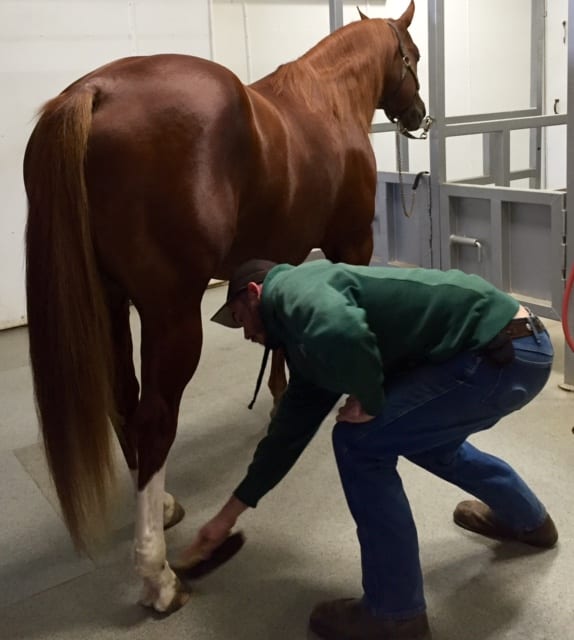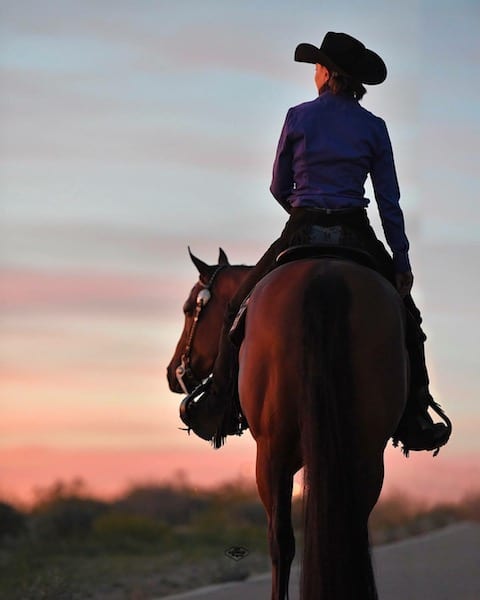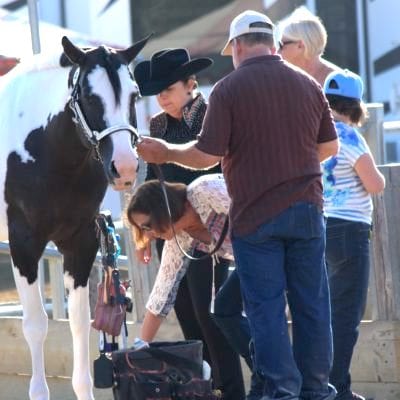Whether you live in a place where you’ve seen signs of spring for weeks or in a place where you’re still searching for that first blade of green grass, spring has officially sprung. With it comes an itch for more regular saddle time and lofty aspirations for this year’s show season.
In either case, there’s no better time than now to do some spring cleaning and organization. Whether it’s clearing out mental space for goal-setting, cleaning out and restocking your grooming kit or finding a home for your used show clothing and tack, GoHorseShow has a few hints to help you conquer this year’s spring cleaning.
Cleaning out your grooming tote
Though it’s a job few enjoy doing, make cleaning out your grooming tote a priority this spring. It can be hard to judge whether your grooming products should be saved or tossed, but there are a few rules of thumb that you can follow to ensure the product or item will work as you expect.
First, remember that if any grooming products have frozen over the winter or been exposed to extreme heat at any point, they should be tossed. Those that are stored in a cool environment out of direct sunlight will last the longest, regardless of life expectancy. Replace sponges or loofahs at least once per year. Shampoos, conditioners and styling products can last up to two years. And most fly sprays, if stored appropriately, can last up to three years.
 Before putting the bottle or jar back in your tote, though, inspect the product for any separation, change in color or odor and dryness. If any of these things have begun, it’s time to toss. Products that list water as the first ingredient or are all-natural will expire before others, and products that have a pump or sprayer typically last longer than those that come in a jar (thanks to dirty horse-show hands that spread bacteria). Store treats in your grooming box or trailer? Throw those out after a year, too.
Before putting the bottle or jar back in your tote, though, inspect the product for any separation, change in color or odor and dryness. If any of these things have begun, it’s time to toss. Products that list water as the first ingredient or are all-natural will expire before others, and products that have a pump or sprayer typically last longer than those that come in a jar (thanks to dirty horse-show hands that spread bacteria). Store treats in your grooming box or trailer? Throw those out after a year, too.
When it comes to grooming tools, have your trash bin handy for those with missing bristles, broken teeth or that you don’t find yourself using often enough to justify keeping. For the ones that do pass your inspection, clean them up by removing dirt or old hair then scrub each tool in a gallon of water with a mild detergent. Rinse thoroughly and disinfect by letting them soak for about 10 minutes in either a mild bleach solution or a commercial sanitizer. Let them dry thoroughly in the sun before restoring. And when you do, consider interlocking brush bristles to save space.
Re-homing used show clothing and tack
 Several options exist to help you clear out your horse show closet or that precious hanging space in your trailer this spring. If you have high-end clothing to sell, you will have the best luck with a company that specializes in consignment for those items. Search for reputable businesses like Show Me Again for easy, trusted transactions without the hassle of trying to do it yourself and for the best results to reach your target market.
Several options exist to help you clear out your horse show closet or that precious hanging space in your trailer this spring. If you have high-end clothing to sell, you will have the best luck with a company that specializes in consignment for those items. Search for reputable businesses like Show Me Again for easy, trusted transactions without the hassle of trying to do it yourself and for the best results to reach your target market.
If you are a do-it-yourselfer and missed your local tack sale or consignment fundraiser, you might try tapping social media. A quick search for used tack or show clothing groups on your favorite social media platforms will yield a list of options on which you might try selling your out-with-the-old show gear. Be sure you carefully read the group’s rules of how to list items and the information that must be included in your ad to be approved. Take nice photos in natural light and add accurate measurements to ensure all parties are satisfied with the item.
Clearing a mental space for fresh goals
 Planning for a successful show season begins early, so start now. If you haven’t yet, set up a time to sit down with your calendar and your trainer. Be clear about what your desired goals are for this year and ask for honest feedback on whether they seem attainable. Consider setting a “show goal” and a horsemanship goal. A “show goal” is the show (and perhaps the class or event) that you want you and your horse as a team to peak at. A horsemanship goal is one that is meant to better you as a horse person. It may be something like working on a problem area in your equitation, deepening your understanding of an equine topic of interest to you or trying a new event.
Planning for a successful show season begins early, so start now. If you haven’t yet, set up a time to sit down with your calendar and your trainer. Be clear about what your desired goals are for this year and ask for honest feedback on whether they seem attainable. Consider setting a “show goal” and a horsemanship goal. A “show goal” is the show (and perhaps the class or event) that you want you and your horse as a team to peak at. A horsemanship goal is one that is meant to better you as a horse person. It may be something like working on a problem area in your equitation, deepening your understanding of an equine topic of interest to you or trying a new event.
Once those decisions have been made, together with your trainer, work backward from your show goal, thinking through the steps it will take to achieve it. This means deciding which shows you should attend, how often to ride and what daily care or maintenance should occur to ensure your horse is in its best physical condition by the show you’re aiming at which to peak.
If you aspire to compete at a World or Congress level show, make sure you pencil in a show before that date that will have a similar level of competitive atmosphere. This will ensure both you and your horse have experienced an environment akin to the one you’ve set your sights on. Treat each opportunity before your goal show as a stepping stone and a learning opportunity.
Clear mental space to focus on achieving your goals and exercise positive self-talk throughout those stepping stone experiences. Finally, consider your budget to ensure your plan is realistic. If not, rework things. Then, step on your horse and get to work. And be sure to hang on in case you’re not the only one with spring fever.
About the author: When she isn’t wrangling 12 and 13 year-olds in her middle school English classroom, Megan Ulrich enjoys riding, showing and judging horses. She lives in Holmen, Wisc., with her husband, daughter, three dogs and two horses. She earned her journalism degree from the University of Wisconsin-Madison.
Photos @ Jeff Kirkbride, GoHorseShow, Delores Kuhlwein









